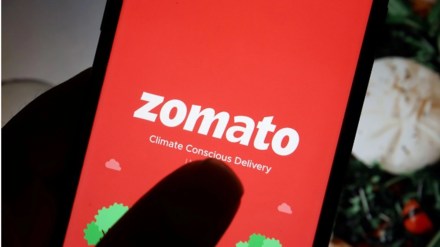Food tech player Zomato on Thursday reported a higher net loss of Rs 346.6 crore for the December quarter, higher than the Rs 250.8 crore losses it reported in Q2FY23. On a year-on-year basis, Zomato’s losses further went up compared with Rs 67.2 crore a year ago.
Consolidated revenue from operations, including both food delivery and quick commerce (Blinkit subsidiary), jumped by 17.2% q-o-q to Rs 1,948.2 crore in Q3. Zomato had reported operational revenues of Rs 1,661.3 crore in Q2 and Rs 1,112 crore in the same quarter last year.
Total expenses stood at Rs 2,485.3 crore, a jump of 19% q-o-q from around Rs 2,091.3 crore in Q2. Highest expenses in Q3 were from delivery and related charges, which stood at Rs 654.9 crore, a substantial rise from Rs 590.3 crore in Q2. Zomato also spent Rs 347.9 crore on advertisement and sales expenses in Q3, which also rose from around Rs 299.7 crore in the previous quarter.
Note that the December quarter was the first full quarter after the consolidation of Blinkit’s quick commerce business. However, excluding the Blinkit numbers, Zomato’s adjusted Ebitda turned positive for January, Zomato said in its financial report.
At the standalone level, excluding quick commerce revenues, Zomato’s business posted a net profit of Rs 61.6 crore, which rose from Rs 11.8 crore in the previous quarter. In Q3FY22, Zomaot’s standalone business reported a net loss of Rs 324.7 crore.
Zomato’s standalone business posted operational revenues of Rs 1,191 crore in Q3, which is a marginal q-o-q rise compared to Rs 1,177.9 crore in the previous quarter. A year ago, standalone revenues stood at Rs 941.2 crore.
The foodtech company did not provide an explanation for the further increase in losses in Q3FY23. However, in the previous quarter, it had attributed it to the inclusion of its quick commerce vertical (Blinkit) numbers in its consolidated statements.
Also read: Insurance companies can now participate in TReDS: RBI
Zomato added that the adjusted Ebitda loss, excluding quick commerce, reduced to Rs 38 crore in Q3 compared with Rs 60-crore Ebitda losses reported in Q2FY23.
Total adjusted revenue, excluding quick commerce, for Q3 grew 5% q-o-q to Rs 2,062 crore, compared to Rs 1,965 crore in the previous quarter and Rs 1,422 crore a year ago.
Zomato’s adjusted revenue number is calculated after adding the revenue collected directly from customers for delivery charges during the quarter. “We have seen an industry-wide slowdown in the food delivery business since late October (post the festival of Diwali). This trend has been seen across the country but more so in the top 8 cities,” said Akshant Goyal, chief financial officer, Zomato.
He added: “(However) profitability continued to improve with contribution increasing to Rs 339 crore in Q3, up 14% q-o-q. Consequently, food delivery adjusted Ebitda increased to Rs 23 crore(0.3% of gross order value) from Rs 2 crore in Q2.”
Zomato had entered the quick commerce space after it acquired Blinkit (formerly Grofers) in June for Rs 4,447 crore — about 40% lower than the valuation it once commanded. For the December quarter, Blinkit’s revenue increased by 27.5% q-o-q to Rs 301 crore, compared with a revenue of Rs 236 crore in the previous quarter. Blinkit also reported a negative adjusted Ebitda of Rs 227 crore in Q3FY23 against Rs 259-crore negative Ebitda in Q2FY23.
In Q3FY23, the gross order value (GOV) for Zomato’s core food delivery business increased by a marginal 0.73% q-o-q to Rs 6,680 crore compared with Rs 6,631 crore in GOV reported in the previous quarter.
For Zomato’s core food delivery business, the average monthly transacting customers decline marginally to 17.4 million in Q3FY23 compared to 17.5 million in the previous quarter. Average monthly live restaurants on Zomato’s platform in Q3FY23, however, increased to 209,000 compared with 207,000 restaurants in the previous quarter.
“We added 23.0 million new customers in CY22 compared to 23.6 million in CY21. These are customers who placed at least 1 order on Zomato in the year. Even in the last quarter of CY22, while the overall demand was soft, the pace of new customer addition was strong,” said Deepinder Goyal, chief executive officer, Zomato.
The monthly order volume for Blinkit increased slightly by 21% q-o-q to 31.6 million, while the average order value (AOV) also decreased by 2.6% to Rs 553 in Q3FY23. The average transacting user base in the same quarter increased to 3.1 million from around 2.6 million in the previous quarter.
“We are an early-stage business, so any macro slowdown doesn’t have a visible large-scale impact on our growth metrics. Blinkit is also less impacted vis-à-vis the food delivery business as our typical purchase basket tends to be more skewed towards essential/non-discretionary spends,” said Albinder Dhindsa, CEO, Blinkit, in a financial statement release.
Also read: KVIC increases wages of khadi weavers and artisans
Dhindsa also pointed out that the quick commerce firm has identified several new “high-potential neighbourhoods” in existing as well as new cities. “Currently, we believe that we can comfortably grow our dark store count by ~30-40% over the next 12 months. This will also depend on our ability to find the best and most cost-effective locations for these stores,” he added.
Zomato’s CEO Goyal further added that the company has been “constantly re-evaluating and optimising” investments across the board, including taking a “hard look” at resource allocation across functions, shutting down non-performing markets, reassessing headcount, among others.
“Having a profitability mindset is the key…Taking some of these actions early in 2022 has helped us deliver on our own expectations of profit growth. In the last year or so, investors have been far more focused on profitability and we are doing our best to deliver on those expectations,” he added.
